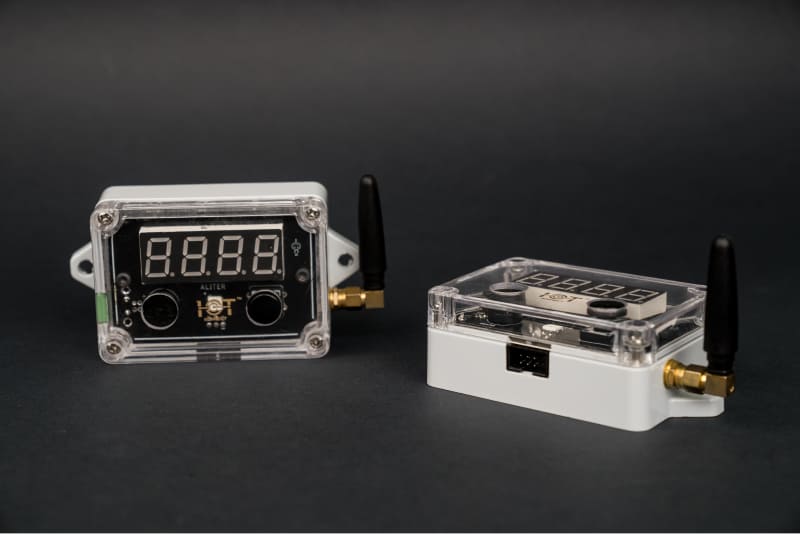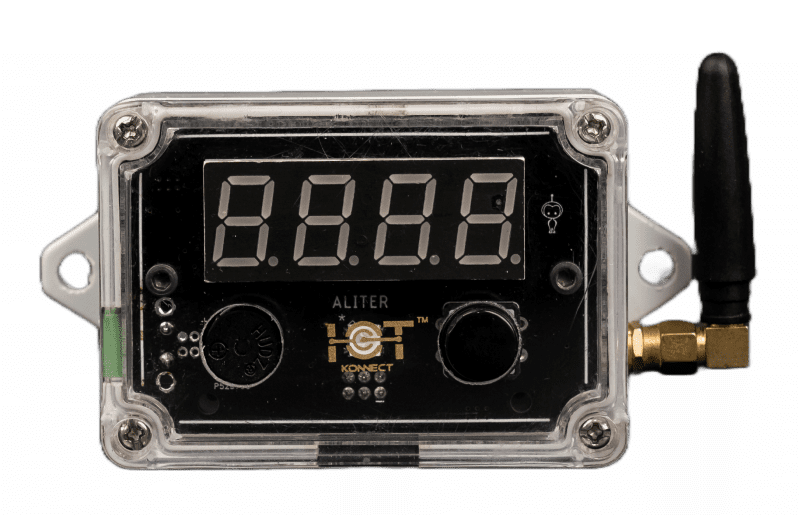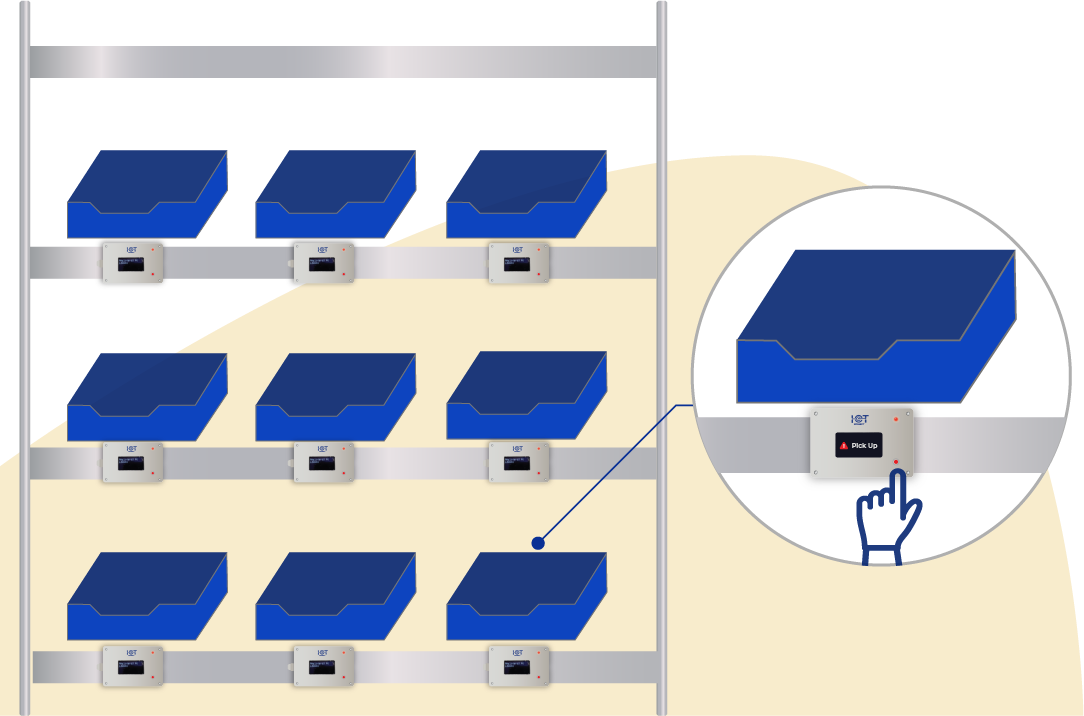One of the most time-consuming tasks in a warehouse is manual picking. It is estimated that manual picking takes up 50% of the total time spent in a warehouse. This tremendous amount of time could be spent on other tasks if there were more efficient solutions. New-age technology can provide several solutions to improve warehouse picking efficiency, speed, and accuracy. One solution is to use a voice-activated picking system. This system allows the picker to focus on their task and reduces the time spent looking for items. Another solution is to use a handheld scanner. This scanner can be used to quickly and accurately locate items.
Both of these solutions can improve the efficiency of picking in a warehouse. They can also help to improve the accuracy of picking. This is because both solutions can provide real-time feedback to the picker. This means that the picker can correct any mistakes immediately.
Pick to Light
Pick to light is a system or method of picking items from warehouse shelves using lights to direct employees. A typical light-based picking system uses different colored LED lights and a series of letters and numbers. Pick to light fulfills orders while improving picking accuracy and efficiency and simultaneously lowering labor costs in a warehouse. Pick to light is paperless and robust; it uses alphanumeric displays and buttons at storage or warehouse locations to guide employees in light-aided manual picking, putting, sorting, and assembling.
Applications of Pick to Light
- Full case picking from pallet flow
- Carousel light towers
- Component picking, for example, in kit assembly

Benefits of Pick to Light
-
Improved Performance/Efficiency
Pick-to-light systems are implemented in the existing work zones, which helps minimize walking and boost efficiency. If an order picking is required to pass through multiple work zones, the pick-to-light system follows the order, which helps reduce idle time. Pick-to-light systems can be installed onto mobile carts or conveyor systems, allowing an operator to fulfill multiple orders through many zones of your warehouse in a single pass. A picking system connected directly to the shelves enables faster collection and real-time updates. When an item is needed, it is marked by the light without waiting until the new list of picks is created. Time is also saved from printing a new list and beginning the search through the warehouse.
-
Technology Integrations
Depending on warehousing needs, an organization can integrate pick to light within an existing warehouse management system (WMS), supply chain management, enterprise resource planning (ERP), or other host systems for better warehouse controls. A standalone pick-to-light system can also be installed. Advanced pick-to-light systems can analyze productivity, produce pick-rate reports and other metrics, and allow variance in the size of work zones in a warehouse to account for labor-to-order volume needs. Most picking systems do not work with the warehouse inventory software, making it challenging to track progress and improve operations over time. Pick-to-light systems are directly connected with inventory to ensure accuracy and give valuable insights to further enhance the performance of warehouse operations over time.
-
Reducing Pick Errors.
The overall errors caused due to Pick-to-light systems are reduced due to information being conveyed via lights instead of the operator having to memorize or carry manual lists.
-
Paperless
Paperless methods are tied to the benefit of increased efficiency, it’s important to note the help of a paperless picking system. In short: The operators save time when they eliminate the step of leafing through paper-based records.
-
Ease of Use
Training warehouse operators in traditional picking can take hours – or more, depending on the size and complexity of your warehouse. An efficient pick-to-light system can cut training down to 30-45 minutes.
-
Improved Order Accuracy
From a customer-service standpoint, the most significant benefit of pick-to-light systems is fewer picking errors and mistakes. Pick-to-light systems help increase order fulfillment performance, creating happier end customers.
-
Lower Labor Costs
Traditional order-picking methods add up to one of the most significant expenses in warehouse operations. Implementing systems that involve less walking and short order fulfillment time leads to one crucial benefit to your warehouse: reduced labor costs.
-
Easier Training
Hiring and training warehouse operators or workers can be costly. Errors can also be made when the warehouse system, picking system, and inventory software are difficult to learn quickly. Pick-to-light systems are simple and easy to understand, making it easier to train quickly and effortlessly. For organizations struggling to streamline picking processes in their warehouse or storage, pick to light may be a viable solution. It’s the fastest operator-based picking system, so if improving productivity is your goal, pick to light is a sure bet.

Put to Light
Put-to-Light system is an effective automated sortation method to break larger quantities of items into individual customer orders, using light devices to direct storage or warehouse operators to 'put' items. The put-to-Light approach is also referred to as "scan and sort". Merchandise that is typically batch-picked beforehand is brought to a put station. Storage or warehouse operators scan bar codes on individual pieces of merchandise, after which lights turn on at any separate customer orders requiring that product.
In a put-to-light system, containers of individual items are directed to a put-to-light packing area where each order has an assigned packing location in the order consolidation work area. The storage or warehouse operator scans the container barcode on an inbound container that may be entering the put-to-light receiving location. After getting scanned, ‘put’ lights at the ‘put’ locations light up and display the quantity to place or put.
Once the correct quantity of the item is placed into the container, the operator confirms the ‘put’ by pressing a light or button. The operator repeats these steps for all locations with an illuminated display until complete and then moves on to the following product that needs to be put into containers. A Put quantity can be any unit of measure less than a case.

Benefits of Put-to-Light
- Utilizes the same devices and technology used for the pick-to-light system.
- Reduced labor costs.
- Improved fulfillment accuracy rates.
- Faster order cycle times.
- Reduce operational costs through reduced labor, errors, rework, or chargebacks.
- Space efficient, adding capacity to facilities with limited space.
- Cost-effective automation method: Put systems don’t require a light device at every SKU location as Pick-to-Light systems do.
- Quick implementation and minimal operator training time.
- Paperless fulfillment option.
- Faster sortation rates, offering an average increase of 40% over paper-based or RF-only based methods.
- Optimizes cross-docking or flow-through facilities.
- Reduced Employee Training Time.
- Improved Customer Service.
Application of PICK/PUT TO LIGHT systems:
- Retail
- Direct Selling
- Pharmaceutical
- eCommerce & Catalog
- Automotives
- Health & Beauty, Cosmetics
- Automotives
- Manufacturing
- Warehouses
- Grocery & Convenience Store
- Third Party fulfilment Providers
